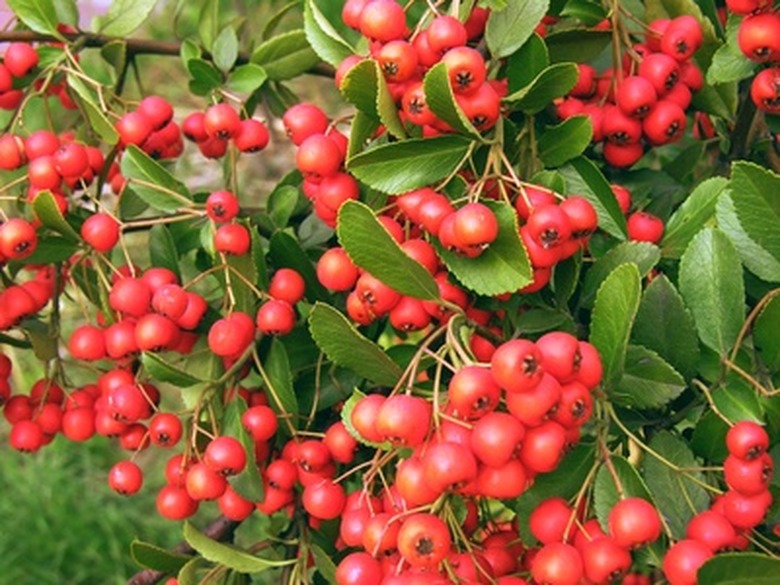Hardy Shade Trees For Indiana
Trees that are the most hardy in Indiana are the ones native to the state. The trees are naturally acclimated to the environment, the climate and the different types of soil in all parts of the state. Gardeners with large properties and those with smaller plots can find a shade tree just the right size for their needs.
Cockspur Hawthorn
Cockspur hawthorn (Crataegus crus-galli L) is native to the United States and can be found growing from New England west to Wisconsin, then south to East Kansas and East Texas and east to South Carolina. The tree is a member of the rose family that grows from 20 to 35 feet tall with a similar crown spread. The deciduous leaves turn bright orange or red in the fall and the tree produces clusters of white or pink flowers in May and June, which give way to small, red fruit that stays on the tree for most of the winter. One of the outstanding features of the tree is the branches with their thorns that reach the ground. Plant cockspur hawthorn in full sun, partial shade of full shade. The tree prefers a soil–sandy, sandy loam, medium loam, clay loam or clay–that is moist and well drained, but can take a dry soil. Butterflies will come by for the nectar and birds for the fruit.
- Trees that are the most hardy in Indiana are the ones native to the state.
- The deciduous leaves turn bright orange or red in the fall and the tree produces clusters of white or pink flowers in May and June, which give way to small, red fruit that stays on the tree for most of the winter.
Northern Catalpa
Northern catalpa (Catalpa speciosa (Warder) Warder ex Engelm.) is also known as the Catawba-tree and is a member of the trumpet-creeper family. The tree is native to the United States from Western Tennessee and North East Arkansas to South West Indiana and Eastern Missouri. Northern catalpa is a deciduous tree that grows from 75 to 100 feet tall, with dark-green, heart-shaped leaves up to 2 inches long and 8 inches wide. The tree produces white, bell-shaped flowers growing up to 2 inches long and 2 inches wide in clusters, at the tips of the branches, from April through June. The flowers give way to narrow seed pods that grow up to 18 inches long. Plant northern catalpa in partial shade and rich, moist soils. The tree is adaptable to many types of soil, but it needs to be kept moist.
- Northern catalpa (Catalpa speciosa (Warder) Warder ex Engelm.)
- Northern catalpa is a deciduous tree that grows from 75 to 100 feet tall, with dark-green, heart-shaped leaves up to 2 inches long and 8 inches wide.
Shagbark Hickory
Shagbark hickory (Carya ovata (P. Mill.) K. Koch) is a native American tree, member of the walnut family. The tree grows from 60 to 120 feet tall with yellow-green leaves that turn gold and then bronze in the fall. It produces edible nuts that start out green, turn red and finally brown when ripe. Shagbark hickory is native from Southwest Maine to Central Michigan and Southeast Minnesota, and grows far south in Central Georgia, East Texas, Central Kansas and Southeast Nebraska. Plant shagbark hickory in full sun, partial shade or full shade, and in a sandy, sandy loam, medium loam, clay loam or clay soil that is moist to dry. Squirrels love the seeds and birds will come for both the seeds and the fruits.
- Shagbark hickory (Carya ovata (P.
- Mill.)
- Plant shagbark hickory in full sun, partial shade or full shade, and in a sandy, sandy loam, medium loam, clay loam or clay soil that is moist to dry.
